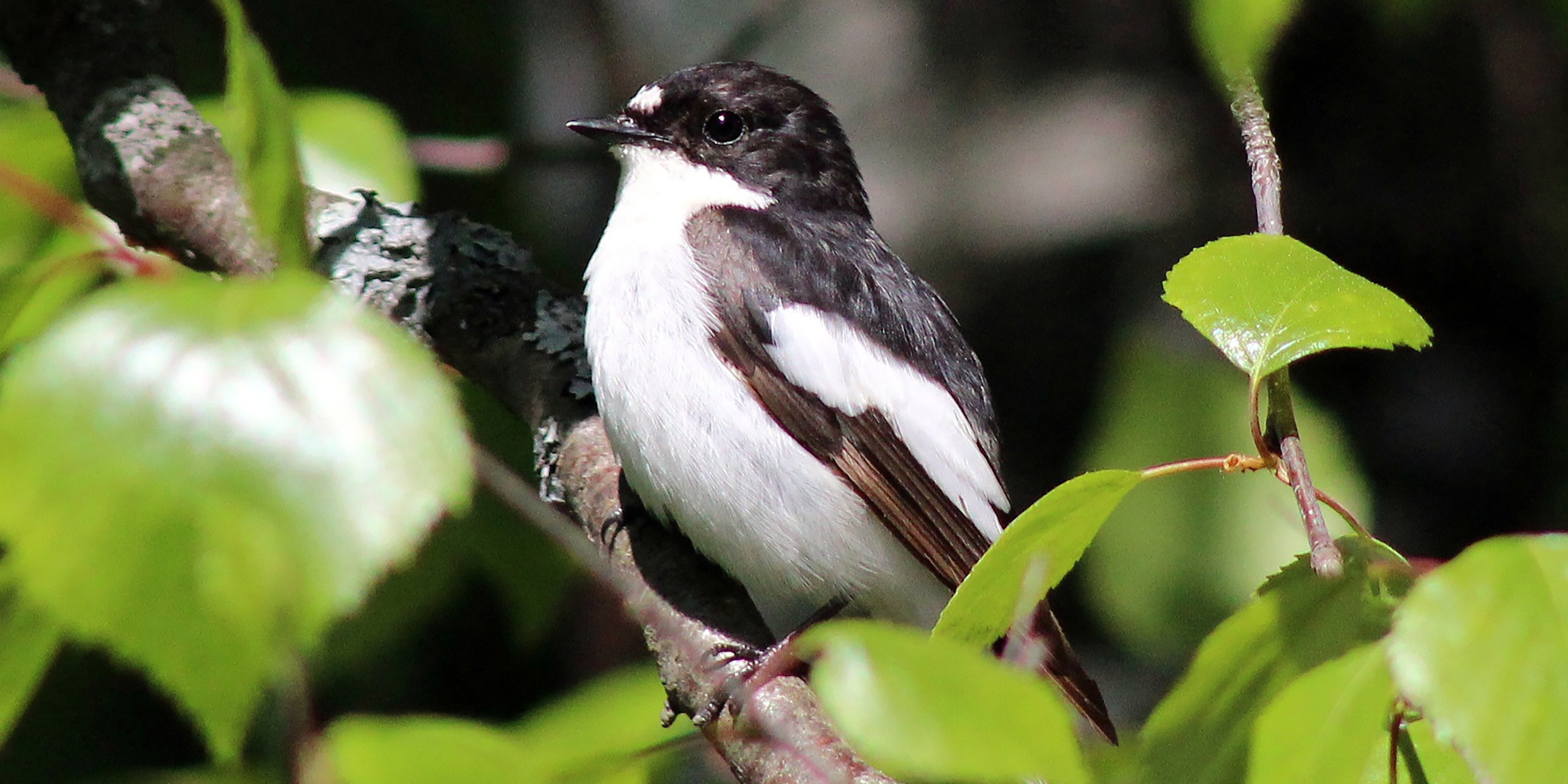Originally published 13 October 1986
How can I make myself more attractive to the opposite sex?
Should I invest in clothes, or in real estate? Should I dress in bright colors, or wear muted earth tones? Should I sign up for a bodybuilding course at Nautilus, or cultivate a lean and hungry look? And what can the pied flycatcher teach me about all of this?
Probably nothing. But ever since Aesop we have been inclined to see glimmers of ourselves among the lower orders of animals (and glimmers of them in us). We have enough in common with the birds and the bees to want to search their behavior for instructions about our own. And so it is that I read with interest articles in the scientific literature on the sexual behavior of pied flycatchers and Australian bowerbirds.
Attraction through architecture
The bowerbirds of Australia and New Guinea have one of the most elaborate mating behaviors in the animal world. The males of the species build wonderfully decorated bowers for the purpose of attracting females and as sites for copulation. The bowers are built with sticks on a cleared area on the ground. The floor of the bower is covered with bright straw. The bower is adorned with such baubles as snail shells, bright pebbles, iridescent feathers, insect parts, and bits of bone. Objects snitched from a human environment are often used to enhance the bower: bottle caps, thimbles, coins, clothespins, and the like.
In the June [1986] issue of Scientific American, zoologist Gerald Borgia described a detailed study of bowerbird behavior. Automatic cameras were used to keep close tabs on a colony of the birds, recording even their most intimate moments.
Conclusion: Female bowerbirds actively choose mates on the basis of the quality of their architectural displays. Borgia and his colleagues went so far as to remove the decorations from certain bowers. The owner’s success with females plummeted.
Presumably, sexual behavior among bowerbirds is genetically programmed so that a female selects a mate with “good genes.” Says Borgia: “A female that chooses an older, established male with a well-built, well-decorated bower and a refined courtship call has evidence that her prospective mate not only has been able to survive to a relatively old age, but also has been able to do it while learning to build and maintain a high-quality bower under the rigors of male competition.”
We older, established human males with reasonably well-built bowers and a repertoire of refined “sweet talk” can’t help but feel a certain sympathetic affinity with the bowerbirds. On the other hand, we may be less consoled by the pied flycatchers.
The lure of location
In the September 11 [1986] issue of Nature, Rauno Alatalo, Arne Lundberg, and Carolyn Glynn report on a study of mating habits among the pied flycatchers of Sweden. The researchers chose male birds at random and forced them to occupy nesting sites in territories of varying quality. It turned out that age, size, plumage color, or song repertoire of the males had no influence on female choice. The single most important criterion was the quality of the occupied territory. Females wanted a place safe from predators and close to favored feeding sites, and would choose any mate to get it.
Another recent report in Nature describes an experiment on female choice among ladybugs. By selectively breeding the beetles over 14 generations, four researchers from Cambridge University demonstrated that a female preference for males of a certain coloring was controlled by one (or a few) genes. This sort of experiment is important in that it shows that behaviors as complex as sexual choice might be controlled by a single gene.
It has been a little more than a decade since the publication of Edward O. Wilson’s Sociobiology: The New Synthesis, a magisterial analysis of the genetic basis for animal behavior. The book evoked a lively controversy among anthropologists and sociologists. What exasperated many of Wilson’s colleagues was his claim (in the last chapter of the book) that human social behavior is genetically constrained. According to Wilson, such things as human aggression, sexual behavior, and social stratification are at least partly controlled by the genes. That claim was ideologically and scientifically unacceptable to many people.
Wilson’s critics were unwilling to admit that we might be moral hostages to evolution. Wilson responded by saying that genes are constraining, not determining.
It would presumably require controlled breeding experiments, like those done with the ladybugs, to conclusively demonstrate genetic constraints on human behaviors. For obvious reasons, that is not going to happen. It may or may not be true that we have inborn tendencies to behave in certain ways. In any case, we are free enough of our genes to create whatever kind of society we think best. That freedom is the essence of our humanity.
Meanwhile, I will keep my eye on the bowerbirds and the flycatchers. I may add a few more decorations to my bower (tasteful things, of course, from the classiest catalogs). And I am thinking about moving my nest to a more upscale territory.



